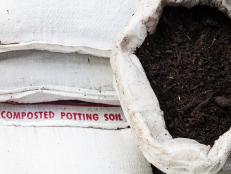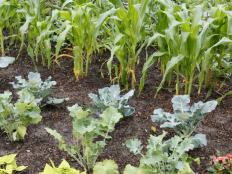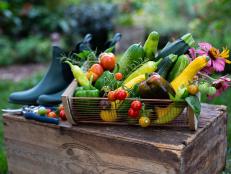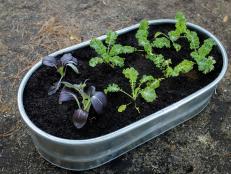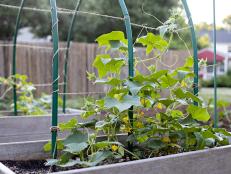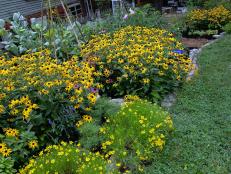Workplace Gardens: Growing Camaraderie, Collaboration and Team Spirit
See how companies — from large corporations to small local firms — are implementing worksite gardens to encourage healthy living and sustainability.

Bob Farley
As employers like Google and Blue Cross Blue Shield recognize the benefits of workplace gardens — places to experience respite, camaraderie, collaboration and team spirit — corporations are integrating vegetable and herb gardens into their campuses. Gardens become neutral zones where office roles and barriers fall away, decisions are made through community, and talking openly becomes easy. Relationships are made, ideas are born and collaboration takes place. Through careful planning and working toward common goals, business attributes can be cultivated in a workplace garden.
Birmingham, Alabama-based construction firm Stewart Perry built with sustainability and green initiatives in mind, and wanted an eco-friendly campus to match its LEED-certified buildings. Cisterns and rain gardens catch runoff from roofs, and rainwater from the parking lot filters through plants and slowly absorbs into the ground, while excess water flows into a small lake. Water is pumped from the lake to the irrigation system. Plants adapted to the southern seasons, hot and dry as well as cold and wet, fill the landscape. A large vegetable garden and a fruit orchard are part of the work environment. Company leaders recognize that both the view of the outside and the downtime spent outdoors energize employees, and they know that happy people work more efficiently. "The garden is more than something that produces healthy eating, it is also a work of art," says Merrill Stewart, president and founder. "It always brings me joy to see the beauty of the garden in the summertime."

Bob Farley
Incorporated into the eco-friendly Stewart Perry campus, a large vegetable garden is part of the work environment.
As the company and campus have grown, so has the vegetable garden. Robbie Cather, a project manager for the company, conceived the idea for the garden years ago, and through the spirit of adventure, he started with a few easy-to-grow tomatoes. Enhanced over time — cultivated plots with custom-made raised beds, artful trellises, rock-lined themed gardens, and bountiful produce to share with employees — the success of the garden is a result of thoughtful reflection and the willingness of the company to hire a gardener to manage and tend the garden. "As produce is harvested, it gets put on the table for workers to take home," Robbie explains. "Whatever is left on the table is examined, and adjustments and decisions are made about what to grow or what not to grow." He continues, "Practical choices come out of experiments made by the adventurous gardeners, but back to the basics is where we end up. A gardener might try growing an unusual bean, but people are more likely to eat what they know, what their grandmothers grew or cooked, so we will grow green beans instead of the exotic bean. And in that way, everybody is involved with the decisions and even the spouses weigh in.” Laura Rodgers, the gardener, agrees with making adjustments based on what's left on the table, but she also likes the idea of experimenting to foster a diverse garden. "Right now, I'm thinking fewer collards and more broccoli," she says. She also likes the idea of sending recipes to the table along with the produce to encourage folks to try new things.

Bob Farley
Blueberries are ripe for the picking during the summer. Laura works hard during the long growing season to grow and harvest fruits and vegetables, and during the winter, she establishes cover crops, grows cold-loving herbs, and spends time prepping for the next season.
Laura manages to grow a four-season garden in the southern climate. She divides the garden into four quadrants for easy planning, for keeping track of plant families that will be planted each season, and to minimize soil and plant disease. In the winter, she plants two beds with leafy greens (spinach and lettuces) and Brassicas (broccoli, collards, kale and cabbage), and she'll keep them under row cover to protect them from cold snaps. In the other two beds, she sows crimson clover or a winter grain to act as a cover crop and to pull nutrients out of the subsoil. Cover crops help increase microbial diversity and keep weeds from getting out of hand. And in the spring, she'll turn those plants over and incorporate them back into the soil before planting the next round. By summer, the crops will be as productive and healthy as possible with minimal use of fertilizers.
"The addition of a picnic table and an umbrella, and just having that space to spend downtime instead of on our hands and knees weeding, makes it more pleasant to spend time in the garden," Robbie says about the benefit of hiring a gardener. "And, Laura does a good job with adding flowers and color to the space to make it enjoyable to just be in." Laura packs the planters full of blooming flowers. She places tall gladiolas in the back of the planters, and shorter zinnias are grown in front. "The zinnias are great for cut flowers to take in with the produce, and they self-seed." She adds, "Vegetables are beautiful in their own way, but flowers bring a different level of beauty to the garden. They grab your attention and pull you into the garden to explore and look for discoveries among the vegetables."
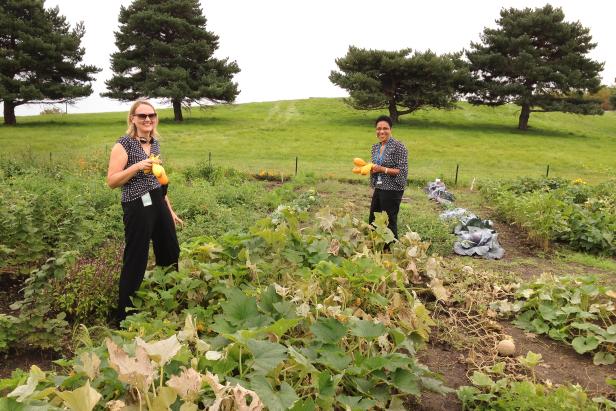
Blue Cross Blue Shield Minnesota
Volunteers, Joan and Mara work together in the Blue Cross Community Giving Garden picking squash to be donated to local food pantries.
Blue Cross Blue Shield of Minnesota combines corporate social responsibility goals and the company’s health initiatives as an extension of its human resources department in the Giving Garden in Eagan, Minnesota. Employees work in the garden on Green Thumb Thursdays, and just 15 minutes of weeding or harvesting can inspire new perspectives for the workday. “From the employees wellness goals of exercise, fresh air, teamwork and social connectedness to the social responsibility goals of connecting our associates to causes they care about — like fighting hunger through access to healthy food — a giving garden truly exceeds all expectations through the wide-ranging impact it can have on the day-to-day experience of employees,” says Susan Schuster, principle community relations consultant with the company. The 3,200 square-foot garden grows a bounty of healthy produce that is donated to local food banks, providing an opportunity for employees to give back to the community. “The experience associates have volunteering in the garden is wide-ranging,” Magda Surrisi, director of strategic execution and implementation, says. “We have associates that are part of our planning committee who help with everything from planning the garden design to putting the garden to bed at the end of the growing season and all that comes in between.” She adds, “There are plenty of smiles and laughter, hard work and buckets of veggies that come from the time our associates spend in the garden.”

Blue Cross Blue Shield Minnesota
Blue Cross & Blue Shield of Minnesota may donate as much as 760 pounds of food in a year from their Giving Garden.
A total of 15 gardens grace the campus of Google’s headquarters in Mountain View, California, and the gardens have three missions to match. Community, Cafe and Demonstration Gardens are tucked into the landscape surrounding the Googleplex. As Googlers move from meeting to meeting, walk about the campus, or take advantage of company amenities, they can enjoy the gardens' beauty and take part in gardening programs.
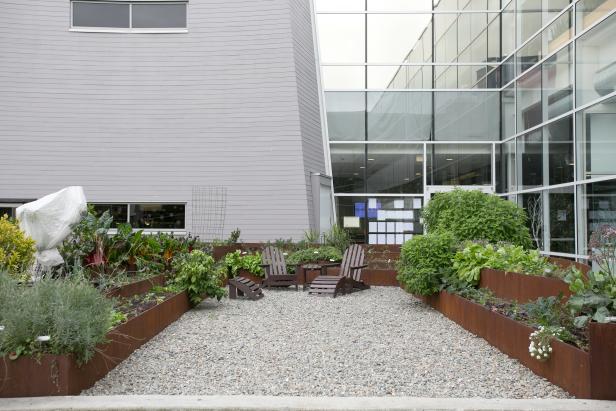
The Google Gardens demonstrate to employees and visitors how to create beautiful and sustainable and landscapes. They showcase edible and ornamental perennials and annuals in artful planters, and the gardens offer spaces for Googlers to spend downtime soaking up the afternoon sun.
In the Community Gardens, employees can join together in teams, sponsor raised beds, make decisions about what to grow and harvest, and take home fresh vegetables and herbs. The community shares ideas and techniques for growing organic food. With the help of the resident horticulturist and Master Gardeners, Googlers realize the core mission of the Community Gardens: cultivate community, harvest healthy living, sprout new knowledge and fertilize philanthropic values. Half of their harvest goes to a local food bank.
Healthy food is a big part of the Google culture, and its cafeterias provide free food to the employees. Each of the campus gardens dovetails nicely with the company’s vision of encouraging healthy eating and sustainable living. The Cafe Gardens help enhance the food experience by providing opportunity for Googlers, chefs and visitors to connect to where food comes from and how it is grown. The food team's sustainable horticulture specialists work with a culinary team to use vegetables and herbs from the organic gardens in the cafeterias.

Googlers are encouraged to volunteer in the community gardens on the Google campus in order to grow organic vegetables, cultivate teamwork and share ideas and techniques.
Google’s Demonstration Gardens show how to create beautiful, sustainable and water-wise landscapes. They showcase edible and ornamental perennials and annuals in creative displays and provide inspiration for making more sustainable life choices. “As we design our spaces and places, we focus on creating a vibrant and healthy environment,” says Mary Davidge, global design director.
A workplace garden can be actively or passively enjoyed, and these companies show how the benefits can be reaped and shared by all tiers of the corporate structure.







